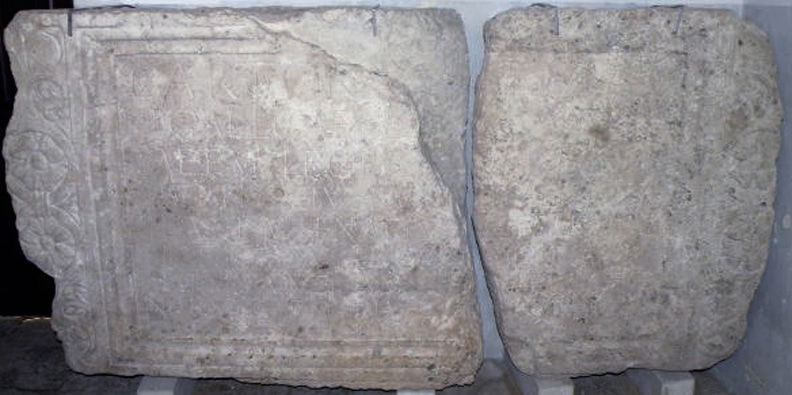Podstrana is an otherwise sleepy hamlet located about 8 km outside of Split. I had never heard of it until a reader told me about its possible connections to a legendary figure. Apparently, Arthur, King of the Britons, might not have been British or even English. The reader claimed he was, in fact, Croatian. GASP.. what?
Skip Ahead To My Advice Here!
On The Historical Hunt

I am terrible at history, so I hope what I (think) I have discovered, I explain correctly…
Some people believe that a man held the legendary position of King Arthur by the name of Lucius Artorius Castus, a lifelong Roman soldier. This theory was proposed as early as the 1920s by a scholar named Kemp Malone and was subsequently expanded upon by later historians. I am told that this theory was worked into the 2004 movie King Arthur (I really need to watch it to see for myself), but let’s face it, Hollywood is hardly a means to determine fact from fiction, now is it?
Who Was Lucius Artorius Castus?
Not much is known about the man named Lucius Artorius Castus, except the limited information obtained from his sarcophagus and the memorial plaque found in Podstrana. These would indicate that Lucius lived sometime between 2 and 3 AD. He was a centurion who had served in numerous legions throughout his extensive military career. According to his epitaph, Lucius may have also commanded two British legions during one of his campaigns.
It’S Written In Stone
Based on the inscriptions in Podstrana, Lucius Castus served in Syria and Judea and what is now Romania and Italy. Near the end of his career, he was transferred to a legion based in modern-day York, England. Although the legion generally remained in the area, one year, they decamped to Lyon, France, to put down a revolt. By this point, Lucius was probably getting on in years, and the position he held at the time, Prefect of the Legion, was typically given to career soldiers that were on the verge of retirement. With this in mind, it seems unlikely but impossible that he fought in any battles on British soil as the legendary King Arthur was said to have done.
However, Lucius held one more office before leaving the military life. He was temporarily given greater responsibility as a Dux Legionum of a military unit sent on a campaign. As part of the inscription on the sarcophagus was missing, historians have long debated where the final sortie he was involved in took place.
Where is the truth? Was he Croatian?
It has been speculated that Lucius and his troops went to Armenia because they were the only known tribe with the prefix mentioned that conflicted with the Romans during this time. Yet there was unrest in Gaul around the same time, and there is speculation that the troops went there instead, which would be more in keeping with the legends of King Arthur.
Retired In Dalmatia?
While the legendary monarch died in battle or shortly after the fact, Lucius retired to become a governor in Dalmatia. Some people believe that Lucius’s family was originally from the Podstrana region. In contrast, others say that they moved after that he attained the position of the governor because other members of the Artorii family crop up in regional documents from the time.
Same, Same, But Different
I am guessing that at this point, you are like me and have no idea if these two figures were the same person.. right? Let’s see the similarities between the legendary King Arthur and Lucius Castus: they were both military men with comparable names and possible connections to Christianity. One item that could be argued either way is the possibility that Lucius may or may not have fought on British soil. The legendary monarch certainly did, but the Roman soldier’s position was more administrative by the time he had reached merry old England.
Likewise, Arthur is thought to have been gravely wounded in the Battle of Camlann. It is possible that the historical Camlann was a Roman fort called Camboglanna, which was located near Hadrian’s Wall and dated back to the same time that Lucius lived in. This is near enough to the centurion’s known position in York that it is possible his duties took him out to the site. It is also conceivable that the fort saw action while Lucius was there, and he might have been wounded as a result.
Is your head spinning yet? Mine hurts…
After spending some time in England, the historical centurion left for France or Armenia, which could account for the portion of the legends that state Arthur went away but was supposed to come back. Or that he went to Gaul only to return and find that his treacherous nephew had taken over in his absence.
Eventually, the legendary Arthur sailed away to Avalon to either be buried or recover from his wounds. The place is described as a sunny island to the west, rather like portions of Dalmatia. So was it? Both men are also known to have died at an old age. Authors since the Middle Ages have further claimed that Avalon was located in the Mediterranean region and Lucius’ burial took place in Podstrana, a town overlooking the Adriatic Sea in the Mediterranean…
There Are Two Minor Discrepancies With This Theory
- The fact remains that Lucius was not from Cornwall but was most likely of Italian ancestry.
- He also was alive several centuries before the legendary king is thought to have existed. So perhaps the two men were related and not actually the same person.

Brands We Use And Trust
Move This Adventure To Your Inbox & Get An Instant Freebie

No spam. Unsubscribe at any time.
Let’s celebrate
Hmmm?!!? I just don’t know. I know that if you ask those from Podstrana, they are convinced, no question. Discovered in the 19th century next to the Church of St. Martin is HIS gravestone.
And, In honor of the King, there is a club KŠD ARTORIUS Podstrana, that works to protect history and organize celebrations in his glory. Each year in August, there is a huge festival held to celebrate Lucius. Also, in August, the club arranges a kayaking race and a swimming event in September.
Do you believe the legend of King Arthur and Podstrana?


Ae. ;)
This is quite cool, and entirely possible, too by the sounds of things. I love stories of King Arthur… I love old history, too, and trying to find out details of things. Particularly since “History is nearly always written by those who win”.
Being from the UK, do you think King Arthur was even real?
All’s well but don’t you see the flow in the title?? CROATIAN in 2-3 AD?? We arrived here in the 7TH century AD, much later than Lucius’ have lived. So, in fact he was a Roman, Italian most likely and whether or not he really was King Arthur remains for historians to discover. But he def. wasn’t Croatian, but he merely resided in Podstrana for a brief period of his life. Back then, the romans and the Greeks still rummaged this area, and we only arrived somewhere mid 630 AD.
This design is spectacular! You certainly know how to keep a reader entertained. Between your wit and your videos, I was almost moved to start my own blog (well, almost…HaHa!) Wonderful job. I really loved what you had to say, and more than that, how you presented it. Too cool!